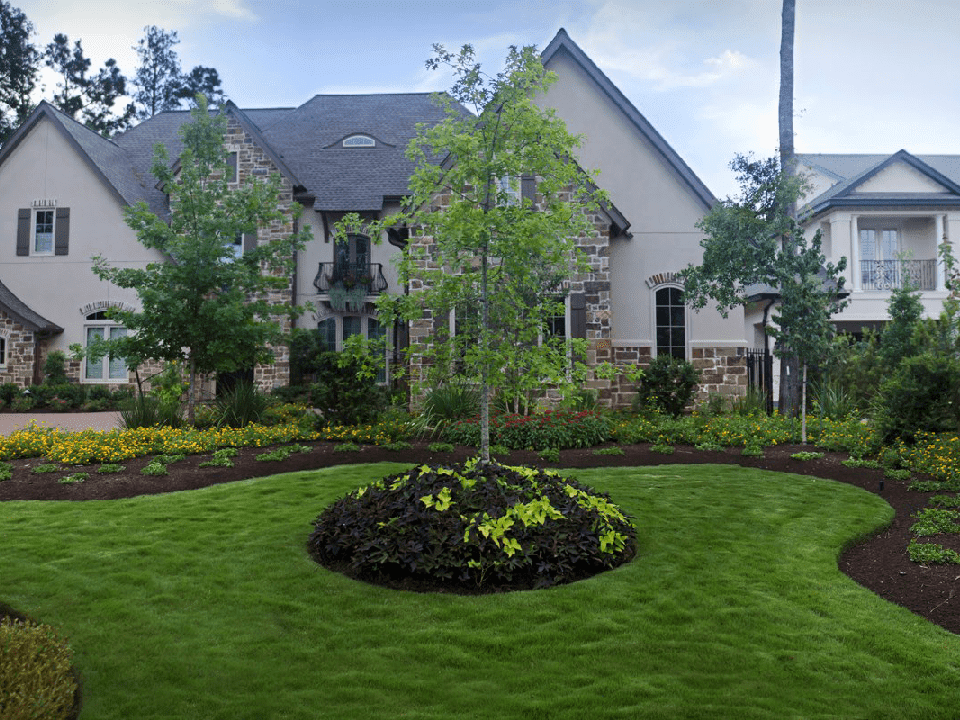Hilton Head Landscapes Fundamentals Explained
Table of ContentsThe Hilton Head Landscapes PDFsThe Ultimate Guide To Hilton Head LandscapesWhat Does Hilton Head Landscapes Mean?What Does Hilton Head Landscapes Do?More About Hilton Head LandscapesHow Hilton Head Landscapes can Save You Time, Stress, and Money.Getting The Hilton Head Landscapes To Work
Line develops all kinds and patterns and can be used in a selection of means in the landscape. Line in the landscape is produced by the edge in between 2 products, the outline or silhouette of a type, or a long direct attribute. Lines are an effective device for the developer since they can be used to create an infinite variety of forms and kinds, and they control activity of the eye and the body.
Lines can have several characteristics, such as those defined below, however they typically offer various functions. Number 1. Lines in the landscape - Landscaping bluffton sc. The residential properties of lines identify how individuals respond to the landscape, both psychologically and literally. Straight lines are structural and powerful; they create an official personality, are generally related to a symmetrical style, and lead the eye straight to a focal point.
The Definitive Guide to Hilton Head Landscapes
Rounded lines produce an informal, natural, kicked back character that is associated more with nature and unbalanced balance. Rounded lines relocate the eye at a slower pace and add secret to the space by creating hidden views.
Vertical lines in the landscape consist of tall, narrow plant material, such as trees, or tall structures, such as an arbor or a bird residence on a post. Straight lines move the eye along the ground plane and can make a space really feel larger. Low lines are more subdued and produce a feeling of remainder or repose.
Not known Factual Statements About Hilton Head Landscapes
Reduced lines are developed by low garden walls, pathways, and short bushes. Lines are used to attract forms on a strategy. In plan view, they specify plant beds and hardscape locations. Lines are likewise developed by the upright forms of developed features and plant product. There are 3 key line types that produce kind in the landscape: bedlines, hardscape lines, and plant lines.
Bedlines attach plant product to your home and hardscape due to the fact that the eye adheres to the line, moving the look through the landscape. Hardscape lines are produced by the side of the hardscape, which marks the developed structure. Line can also be developed by long and narrow products, such as a fencing or wall.
Hilton Head Landscapes Things To Know Before You Get This
Form is found in both hardscape and plants, and it is typically the dominant aesthetic aspect that spatially organizes the landscape and often identifies the style of the garden. The type of structures, plant beds, and garden accessories likewise identifies the general type style of the garden. Formal, geometric forms include circles, squares, and polygons.
Plants produce form in the yard via their outlines or silhouettes, but type can likewise be specified their explanation by a gap or negative space between plants - Landscaping bluffton sc (https://www.anyflip.com/homepage/laavm#About). Circles can be complete circles, or they can be split right into half circles or circle segments and integrated with lines to produce arcs and tangents
Hilton Head Landscapes Things To Know Before You Get This
Circles can additionally be stretched right into ovals and ellipses for more range and interest. Circles are a strong layout kind since the eye is constantly drawn to the facility, which can be made use of to highlight a centerpiece or link other types. Number 2. Round types in hardscape and grass panels.
The square kind can likewise be fractional and used consistently to create a grid pattern. Unlike circles, squares are more powerful on the sides, which can be lined up or overlapped to produce one-of-a-kind patterns and more complicated kinds.
Twisting lines usually resemble the all-natural training course of rivers or streams and can be referred to as smooth lines with deeply bent undulations. Twisting lines (Figure 3) function well for paths, plant bedlines, and completely dry stream beds. Twisting lines can add rate of interest and secret to a yard by leading viewers around edges to find new views and spaces.
The 6-Second Trick For Hilton Head Landscapes

Number 5. Fragmented edges: stepping rocks in path. Type is the most long-lasting high quality of a plant (hilton head landscapers). https://pxhere.com/en/photographer/4299392. Common plant forms are well developed and standardized, as form is one of the most constant and well-known characteristic of plants. Form can likewise be produced through the massing of plants, where the general mass produces a different type than a private plant.
A highly different type has to be utilized with careone or 2 job well as a focal point, yet a lot of wreak havoc. All-natural plant forms, instead than over-trimmed forms, must establish the mass of the composition. The significance of general kind is basically depending on the checking out perspectivethe kind of a tree can appear fairly various to a person standing under the cover versus watching the tree from a distance in an open field.
About Hilton Head Landscapes
Plant kinds also produce and define deep space or open areas in between the plants, producing either convex or concave types in deep spaces. High-arching tree branches generally develop a concave open space under the branches, and a rounded canopy with reduced branches loads the room to create a convex type in the open space under the tree.
